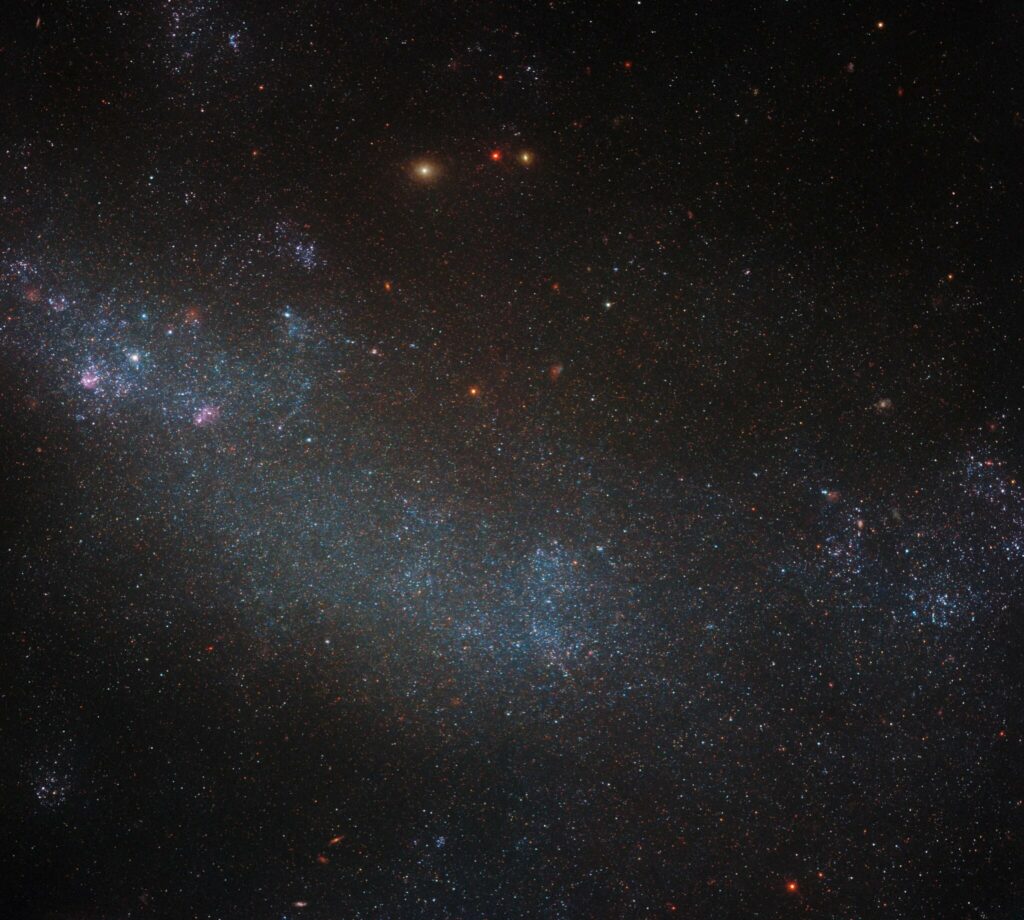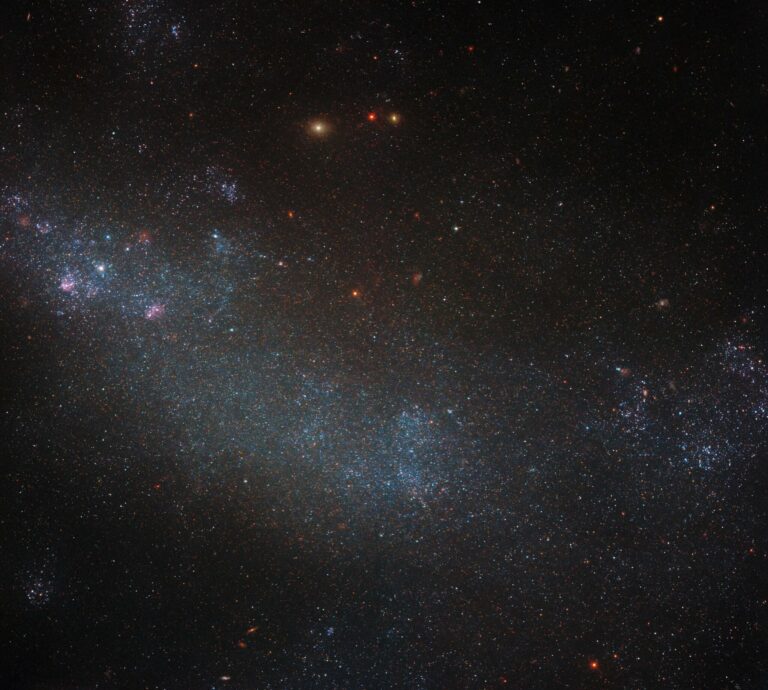Hubble Observes a Galaxy Concealed by Stellar Shroud
This image captured by the NASA/ESA Hubble Space Telescope showcases a densely populated cluster of stars set against a backdrop of dust, gas, and the faint glow of distant celestial objects. The sheer number of stars within the frame may make it challenging to immediately recognize that you are, indeed, observing a galaxy.
Referred to as ESO 245-5, this particular galaxy may be less conspicuous due to its apparent lack of structure, which stands in stark contrast to the breathtaking images of spiral galaxies captured by the Hubble telescope, featuring well-defined spiral arms composed of stars, gas, and dust.

Under the De Vaucouleurs galaxy classification system, ESO 245-5 is categorized as an IB(s)m type of galaxy. This classification signifies that the galaxy is irregular (I) and lacks any discernible pattern. Additionally, it possesses a bar-like structure (B), characterized by a dense bar of stars that extends across its center. The inclusion of the term ((s)) indicates a slight spiral structure, while the final term (m) denotes its similarity to the Large and Small Magellanic Clouds, irregular satellite galaxies of the Milky Way.
ESO 245-5 is relatively close to our own Milky Way galaxy, residing approximately 15 million light-years away in the constellation Phoenix.
This article is republished from PhysORG under a Creative Commons license. Read the original article.
Do not forget to share your opinion with us to provide you with the best posts !




0 Comments